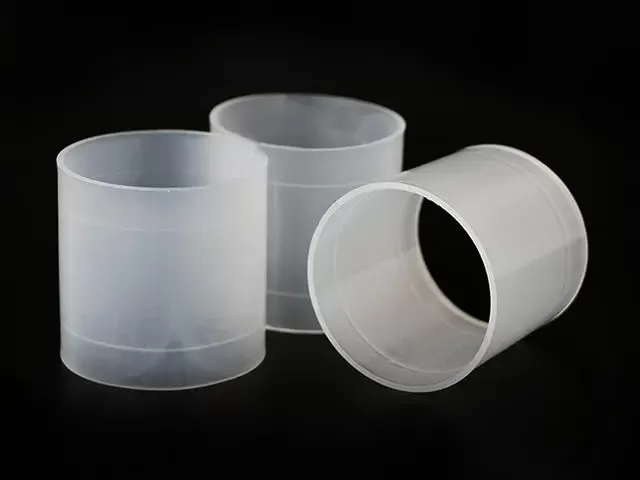Plastic Raschig rings are one of the earliest developed random packing materials. They have a simple shape, being circular rings with a height equal to their diameter. The materials of plastic Raschig ring packing include polyethylene (PE), polypropylene (PP), reinforced polypropylene (RPP), polyvinyl chloride (PVC), polyvinylidene fluoride (PVDF), and polytetrafluoroethylene (PTFE), etc. Plastic packing materials have good corrosion resistance, large voids, high flow rate, low resistance, low energy consumption, low operating costs, light weight, easy installation and removal, and can be reused. They are particularly suitable for use in distillation, absorption and scrubbing towers in the petroleum, chemical, chlor-alkali, gas, environmental protection and other industries at medium and low temperatures (60-280℃).

Plastic Raschig rings made of polypropylene (PP), chlorinated polyvinyl chloride (CPVC), etc. perform well in normal temperature acidic and alkaline environments. CPVC material can operate at 95℃ for a long time and has outstanding resistance to chlorine gas corrosion, and is often used in chemical wastewater treatment towers. The low density (0.9-1.4g/cm³) of plastic materials reduces the loading and unloading cost by 30%. The labor cost for a certain fertilizer factory to replace plastic Raschig rings is only 1/3 of that of metal fillers. In low-load scenarios with gas velocity of 0.3-0.8m/s, the liquid holding capacity (18-22L/m³) of plastic Raschig rings is 10%-15% higher than that of new fillers, which can stably maintain the liquid film thickness.


.png)
.png)
.png)
.jpg)
.jpg)
.jpg)